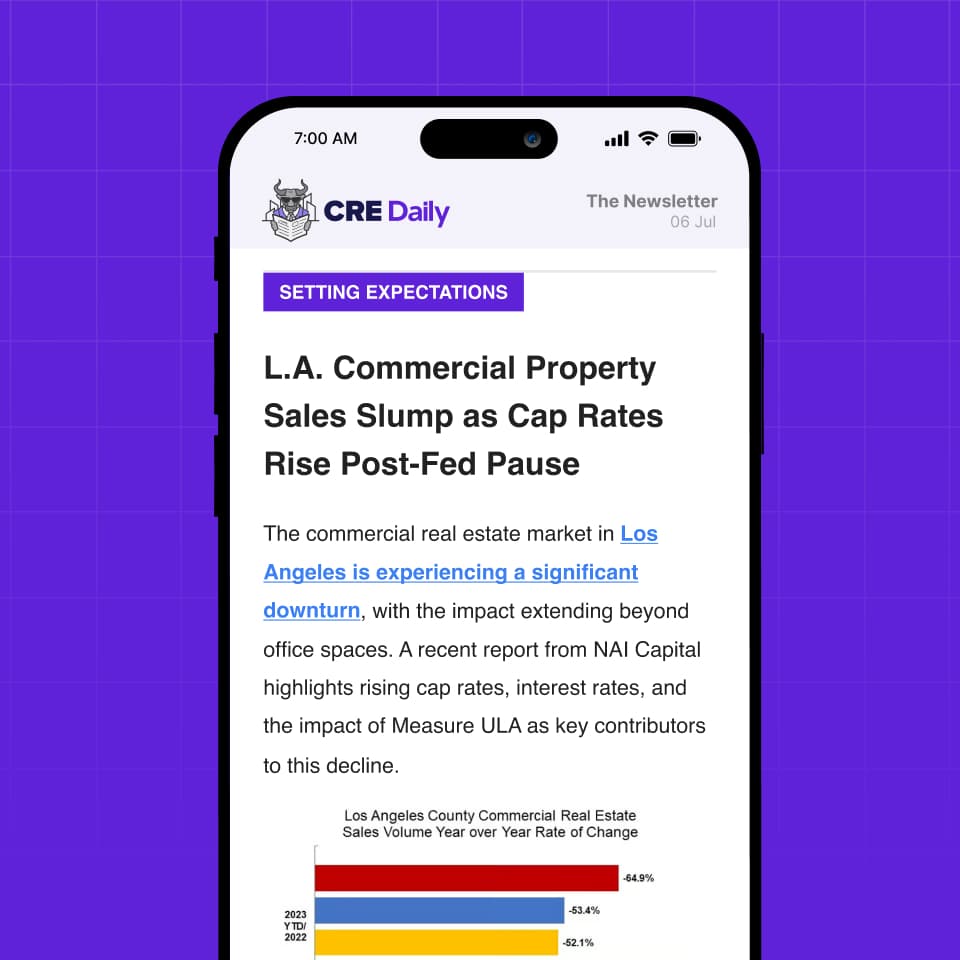- Community banks and credit unions are becoming more active in commercial real estate (CRE) lending as larger institutions scale back.
- These lenders are adjusting their strategies by focusing on shorter yield curves, tightening underwriting, and managing prepayment risk more carefully.
- Despite market challenges, community banks are reporting stronger margins and growing market share in CRE debt, signaling increased influence in the sector.
Small but Steady: Community Banks Expand CRE Role
With big banks pulling back from CRE due to regulatory scrutiny, market volatility, and economic uncertainty, community banks and credit unions are stepping in. According to GlobeSt, they’re emerging as a stabilizing force in the lending landscape. According to a new white paper from Colliers, these smaller institutions are not only staying active—they’re adapting quickly to the new environment.
The report, which features insights from Colliers’ Aaron Jodka and Darling Consulting Group’s Frank Farone and Jeff Reynolds, highlights how community lenders are refining their strategies amid rising refinancing risk and changing borrower behavior.
Strategic Tweaks to Lending Approach
Instead of focusing on traditional long-term benchmarks like the 10-year Treasury, smaller lenders are eyeing the five-year point on the yield curve—aligned with the typical three- to five-year loan term. With more volatility on this part of the curve, many banks are allowing borrowers to choose between floating rates and fixed options through hedging tools like up-front fees and swaps.
Tighter underwriting has become the new norm. Banks are seeing a surge in loan modification requests—especially for loans originated in 2023 and 2024—prompting lenders to demand wider spreads and stronger financial buffers.
Get Smarter about what matters in CRE
Stay ahead of trends in commercial real estate with CRE Daily – the free newsletter delivering everything you need to start your day in just 5-minutes
Margins Up, Pressure Down
Improved yields on loans have reduced the need to cut aggressive deals. One community bank cited in the report expects a 19% margin increase over the next year, thanks largely to higher rates and better pricing power.
Still, there’s complexity in managing existing loan books. A “barbell dynamic” is emerging: older loans issued during the pandemic at 4–5% rates are performing differently than newer loans at 7–9%, creating wide variation in prepayment rates and loan behavior.
Market Share Shifts in CRE Lending
While community lenders now hold a bigger share of CRE debt than a decade ago, most upcoming maturities remain concentrated at larger institutions. As those banks reduce exposure, community lenders are stepping in—often quietly, but critically.
These lenders’ more flexible and hands-on approach to community lending may prove key in keeping the CRE sector afloat through its ongoing reset.
Why It Matters
This transition in lending leadership comes as the commercial real estate industry faces tighter capital conditions and refinancing challenges. Community banks’ growing influence could reshape how deals get done—especially in secondary markets and smaller asset classes where they typically operate.
What’s Next
Expect community lending institutions like local banks to continue expanding their presence in the CRE space, albeit cautiously. With regulatory uncertainty and market volatility still in play, lenders will likely keep refining risk strategies as they fill the void left by larger institutions.


















